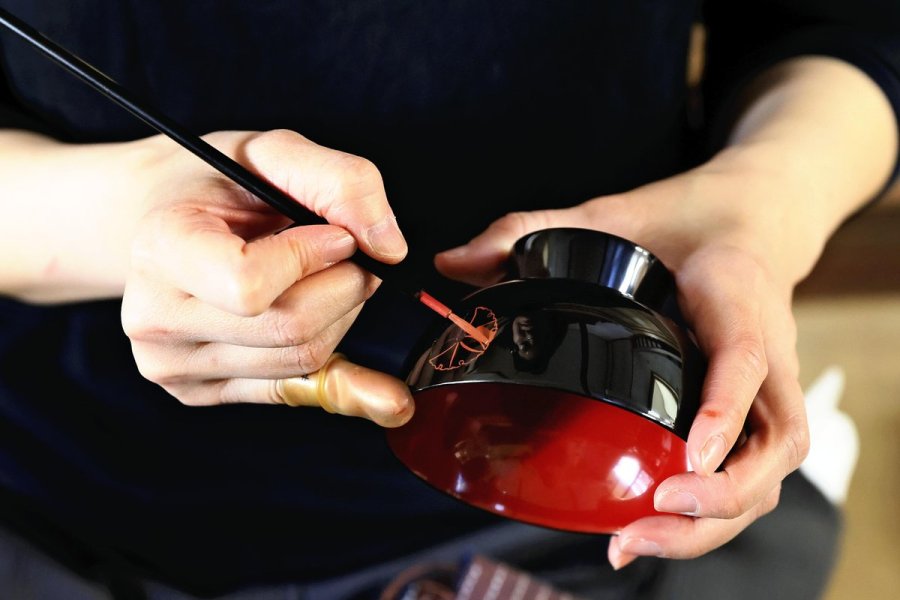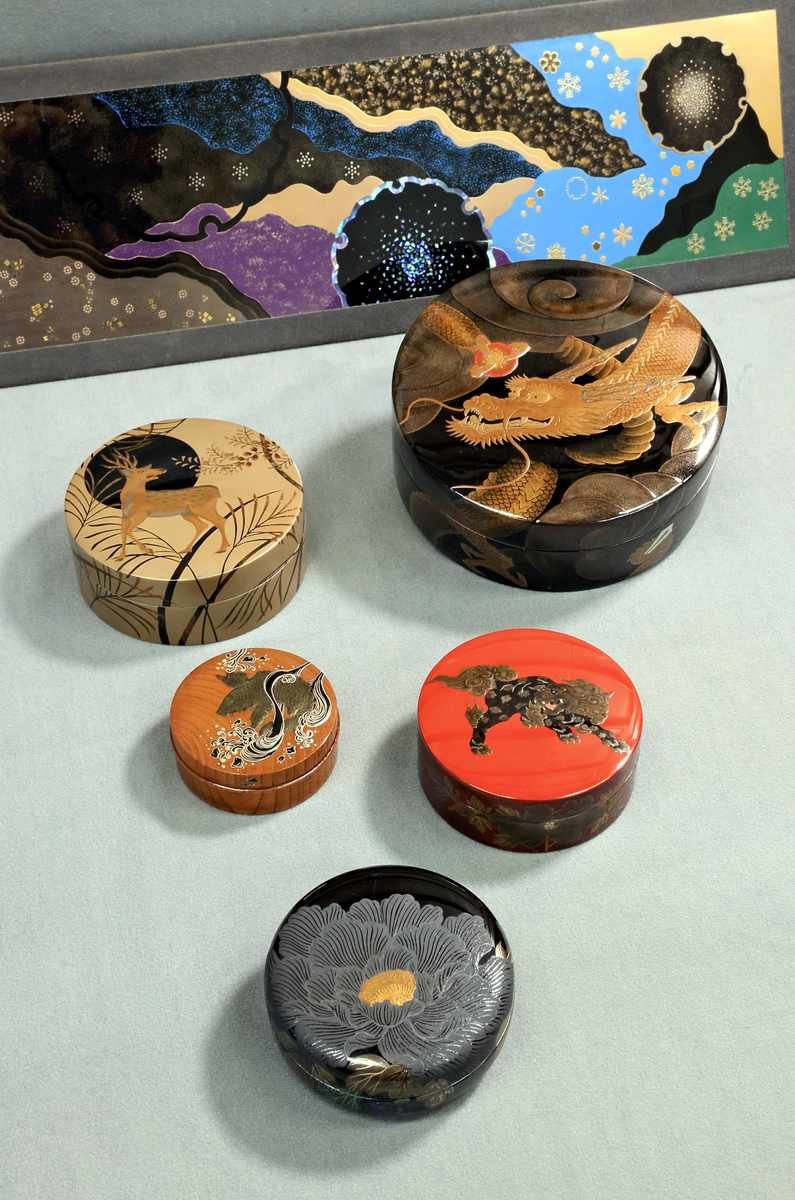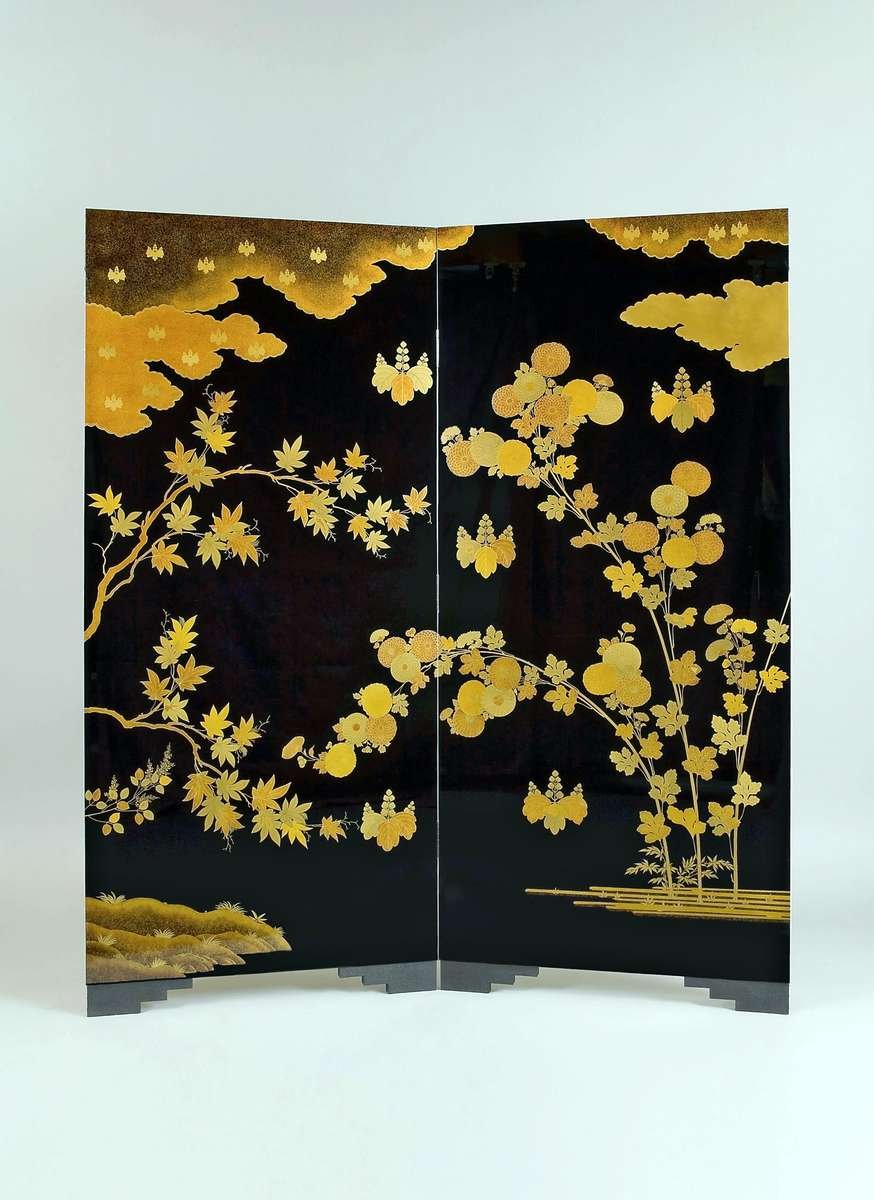February 11, 2025
KYOTO – “Shikkoku,” which uses the character for “lacquer” and means “jet black,” is the perfect word to describe the deep and lustrous surface of lacquerware. Maki-e is a technique in which gold powder and other materials are sprinkled on this lacquered surface to create patterns and designs as if manipulating light and dark in an infinite universe. This superb technique is praised in the West as “japan” after its country of origin. For more than 1,000 years, the art has been cultivated in Kyoto to decorate Buddhist and Shinto ritual tools, tea ceremony utensils, furniture and other items for daily life.
Kana Kondo is a maki-e artisan at the Shimode Maki-e Studio in Shimogyo Ward, Kyoto, which was founded in 1912. Nearly 20 years ago, while studying history and museology at a local university, she was inspired by a variety of precious items and cultural assets to enter a career that preserves valuable objects.

Kondo precisely applies lacquer to a bowl. PHOTO: THE YOMIURI SHIMBUN
The viscosity, hardening time and texture of lacquer change depending on the temperature and humidity, as well as the season and location where it was collected.
The application of countless layers, from the base to the finishing touches, is a finicky process. All artisans know that if the thickness of each layer is not correct even by the slightest amount, the result will be disastrous.
Path to genuine interests
Gold powder is essential for creating various maki-e designs, such as standard patterns and light motifs. Gold powder can be used in more than 80 combinations of various shapes and sizes, such as round and flat. In addition, platinum, silver, copper and a technique called raden (mother-of-pearl inlay) are used to bring out the most appealing expression of light.
A variety of unique materials and tools are used, such as brushes made from rat armpit hair and cat hair, various kinds of charcoal, which smooth the surfaces, and sea bream tooth for polishing.

A range of maki-e tools, including powder cylinders and brushes made of unusual materials. PHOTO: THE YOMIURI SHIMBUN
Powder is sprinkled with a special cylinder made of a piece of reed from Lake Biwa that has a cloth attached to its cross section. During the process, the surface is polished repeatedly. When sprinkling the powder, the cylinder held is above the surface and continuously tapped gently with one’s middle finger. The tapping sound and the movement of the brushes to apply the lacquer evenly create a solid rhythm.
Kondo often moved while growing up, and her family enjoyed visiting various temples, shrines and art museums together. However, when she saw restoration and research work at university, she was intimidated by other students acquiring advanced knowledge and skills.
When it came time to start job hunting, Kondo tried to highlight her strengths during job interviews but couldn’t imagine what it would be like to work for a company. She then asked herself, “What kind of work is true to myself and is something that I can continue for a long time?”

Pieces by Kondo that have been entered in competitions. The delicate designs draw in the eye. PHOTO: THE YOMIURI SHIMBUN
Although Kondo was not sure of her future, she decided to pursue her genuine interests. She entered what is now Traditional Arts Super College of Kyoto in Nantan, Kyoto Prefecture, where she was taught by working professionals.
Bright future
In this completely new world, Kondo chose to learn maki-e as she felt that “it makes the most of materials and forms, and the creator’s individuality always comes through, even though it involves a wide range of techniques.”
Yutaro Shimode, the third-generation head of his family workshop and Kondo’s teacher and mentor, noticed her patient approach to maki-e when she was learning the basics. He has made both traditional and modern works, as well as earned a doctorate from his scientific research of maki-e.
Shimode recognized Kondo’s knowledge and her commitment to perfecting each technique and invited her to work on making furniture of the highest quality for the Kyoto State Guest House. Kondo accepted, as she thought that she could learn both classical and modern elements.

A folding screen created based on a pattern on the back of a door at the miniature shrine at Kodaiji temple in Kyoto. PHOTO: THE YOMIURI SHIMBUN
Later, Kondo joined Shimode’s workshop and has mastered the various maki-e techniques required in the workshop, including the preservation of pieces made between the late Edo period (1603-1867) and the Meiji era (1868-1912), when maki-e was at its height, as well repairing designated cultural properties.
Maki-e has been replaced by mass-produced plastic products and is becoming an art form and a rare item. Still, Kondo said, “The charm of maki-e lies not in looking at it but in the beauty of holding it in your hands.”
A flute case used by a friend who is a musician for Kyoto’s Gion Festival. A wooden fan carried by a referee at the grand sumo tournament. When Kondo envisions how these maki-e items will continue to be used and passed on to future generations, she feels her passion overflow. Certainly, she will keep refining maki-e and brighten its future.

